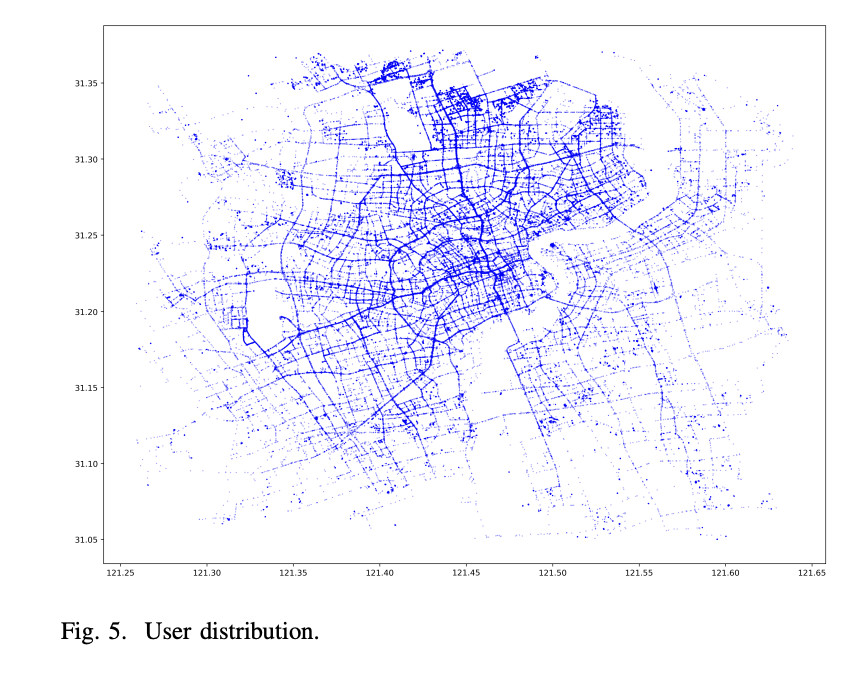

Quality of Service (QoS) is a very important metric used to evaluate the performance of network services in mobile edge environments where mobile devices frequently request services from edge servers. It includes dimensions like bandwidth, latency, jitter, and data packet loss rate. However, most of the current QoS datasets, like the WS-Dream dataset, mainly focus on static QoS metrics and overlook factors like geographic location and temporal data. These dynamic attributes, which capture the mobile device’s location at the time of service requests and the sequence of those requests, are not currently being fully utilized. These factors are essential for accurately predicting network performance, as QoS often varies with changes in location and time.
Current methods for QoS prediction use collaborative filtering, which depends on historical user data to predict missing QoS values based on similarities. These approaches often need help with data sparsity, limiting their ability to generate accurate predictions. During this, essential temporal and spatial variations are ignored. Deep learning-based methods have also been introduced, using models like neighborhood-based learning and user and service graphs or to improve prediction accuracy. These methods still need to be revised to accommodate the changing conditions and diverse user behaviors characteristic of mobile edge environments. Already existing datasets like WS-Dream, which focuses on static QoS metrics, fail to capture time-specific and location-based fluctuations in in-service performance. To tackle this, the CHESTNUT dataset was developed, offering a tailored solution for mobile edge environments by incorporating attributes such as user mobility, server resource load, and real-time geographic data.Â
A group of researchers from Shanghai University have proposed CHESTNUT, which improves QoS prediction by incorporating key factors such as edge server load, user mobility, and service diversity, critical elements for accurately modeling complex interactions in mobile edge environments. To build CHESTNUT, researchers have utilized two real-world datasets from Shanghai: the Johnson Taxi GPS dataset to simulate user mobility and the Shanghai Telecom dataset to represent edge server locations. After preprocessing, these datasets provided a realistic view of user and edge server behaviors. CHESTNUT also includes network-specific metrics like response time and network jitter, which are affected by user-server distance, speed, and server bandwidth usage. This dataset offers temporal and spatial details, enabling more precise, context-sensitive QoS predictions and capturing real-world dynamics. It also introduces resource-based attributes, such as processing and queuing delays, which are influenced by user demand and server capabilities. This granular data allows for a detailed analysis of service interruptions, quality fluctuations, and network stability, providing a robust foundation for QoS prediction models that can respond to the changing demands of mobile edge computing applications, providing a richer and more realistic foundation for QoS prediction, allowing the researchers to create more accurate and responsive models suited to the ever-evolving demands of edge computing.
In conclusion, the CHESTNUT dataset advances QoS prediction for mobile edge environments by including dynamic temporal and geographic information. This comprehensive approach aims to support more accurate and efficient QoS prediction models, addressing gaps left by traditional datasets in adapting to the demands of mobile edge computing. It concluded that the response time is proportional to the load and service resource demands of edge servers while inversely proportional to the total resources of the edge servers. The CHESTNUT dataset is accurate and reliable data to support future QoS prediction in mobile edge environments.
Check out the Paper. All credit for this research goes to the researchers of this project. Also, don’t forget to follow us on Twitter and join our Telegram Channel and LinkedIn Group. If you like our work, you will love our newsletter.. Don’t Forget to join our 55k+ ML SubReddit.
[Trending] LLMWare Introduces Model Depot: An Extensive Collection of Small Language Models (SLMs) for Intel PCs
The post CHESTNUT: A QoS Dataset for Mobile Edge Environments appeared first on MarkTechPost.
Source: Read MoreÂ

